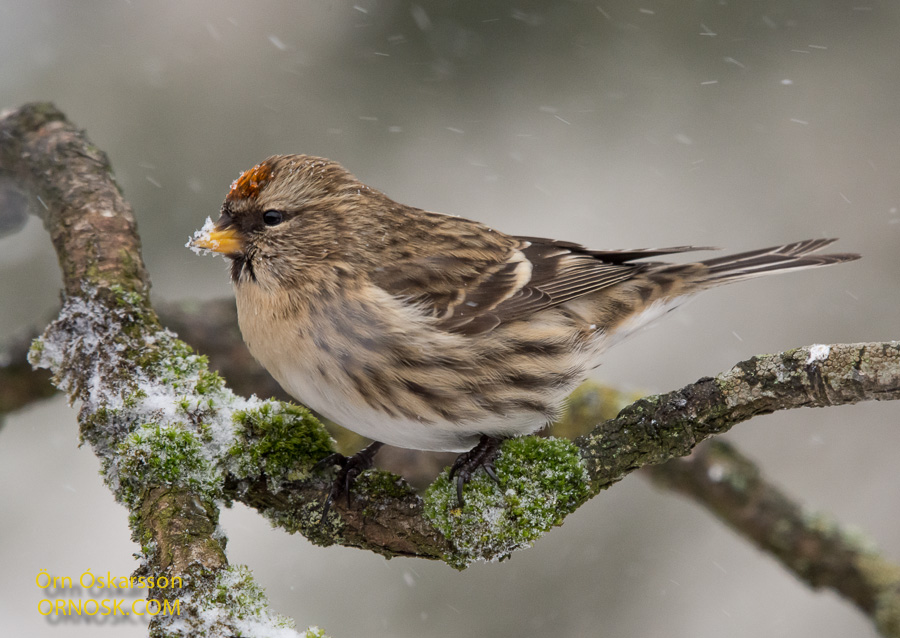
This lone Cormorant was sitting by the edge of the ice on Lake Elliðavatn near Reykjavik. Seems like it has not a bother in the world. Usually they prefer the shore and coastline but they can also sometimes be seen inland at dams, lakes and pits.
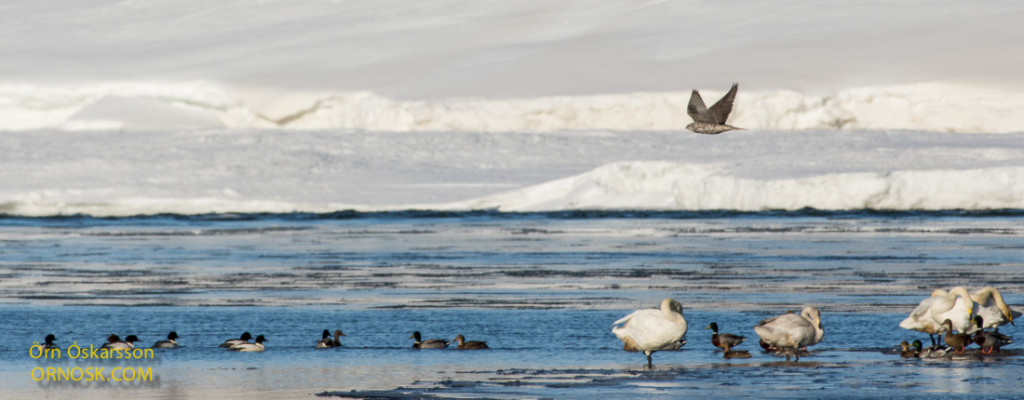
A Gyrfalcon was searching for prey by River Ölfusá yesterday. He flew over a flock of ducks and swans. They did not move and most stayed in the water.
Soon some Ravens came by and chased the Gyrfalcon away.
The Ravens are a tough bunch. This time the Gyrfalcon fled without a morsel to eat.
It is as wintery as can be, snow everywhere and thick slabs of ice that probably won’t melt until who knows when. Despite this the Blackbird has begun singing, a sure sign of the changing of the seasons. So we can not but be hopeful that spring will come this year also. In the twilight at around six o’clock in the afternoon it’s beautiful vocal song can be heard in the neighbourhood.
If you are not familiar with it listen on the web of the British Library:
http://sounds.bl.uk/Environment/British-wildlife-recordings/022M-W1CDR0001524-1900V0
Gjáin in Thjórsárdalur is a paradise of a place. It is a ravine, or narrow valley, with waterfalls, cold springs, interesting lava formations, caves and lush vegetation. The area is an oasis in vast contrast to the surrounding areas. The River Thjórsá flowed there in olden days forming the ravine.
The place is easy to reach in the summertime, about one and a half hours drive from Reykjavík and only a very short drive from the main road in Thjórsárdalur. It can be reached from two angles and both routes involve some hiking along footpaths or down rather steep paths.
The footpath takes you by the historic Viking farm Stöng . Visitors should trod carefully because of the fragile vegetation which is easily susceptible to deterioration by trampling.
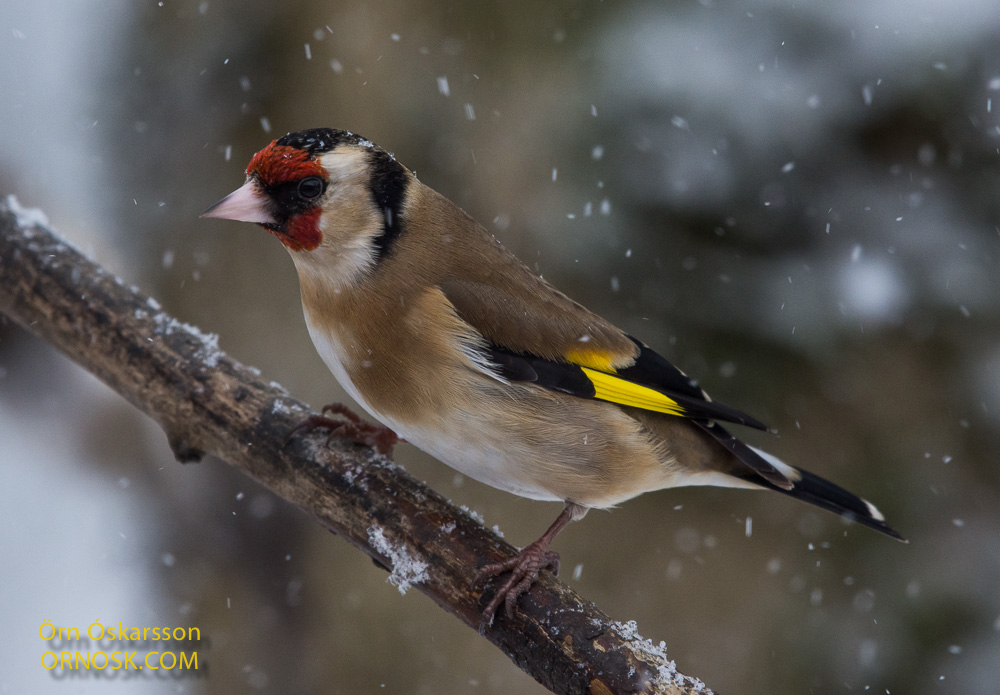
The Goldfinch is holding on and seems full of energy. It is amazing to see how tough this bird is. There has been a blizzard and the frost has been down to – 12°C and the Goldfinch does not even roughen its feathers. We first saw the Goldfinch in the garden January 24 and it has been an almost daily guest since then.
Usually the display of Northern Lights is most common in September and October and in late February and March. For some reason there is less chance of seeing them in the darkest months of the year i.e. in December and January.
Thursday night on my way home I noticed some Northern Lights and stopped to take these photoes.
If all winter days could be like this. Clear blue skies and the river, with the sky reflected in it, as blue as it can be . These are the days for skying and skating. One fault though is that the ozone layer over the country is at its thinnest now so every one is advised to use sun blocker.
Eyrarbakki is a small town on the south coast. It was formerly the main harbour town and trading place on the south coast.
It is known for its quint old houses that were built close to one another along the coast. Now it has become a popular place to live in and more and more houses are being renovated.
The House (Húsið) is a museum of olden times. It is in one of Iceland’s oldest buildings from 1765. It was built by Danish merchants who overwintered in Iceland.
The village Eyrarbakki, along with its beautiful coastline, is a popular tourist attraction.
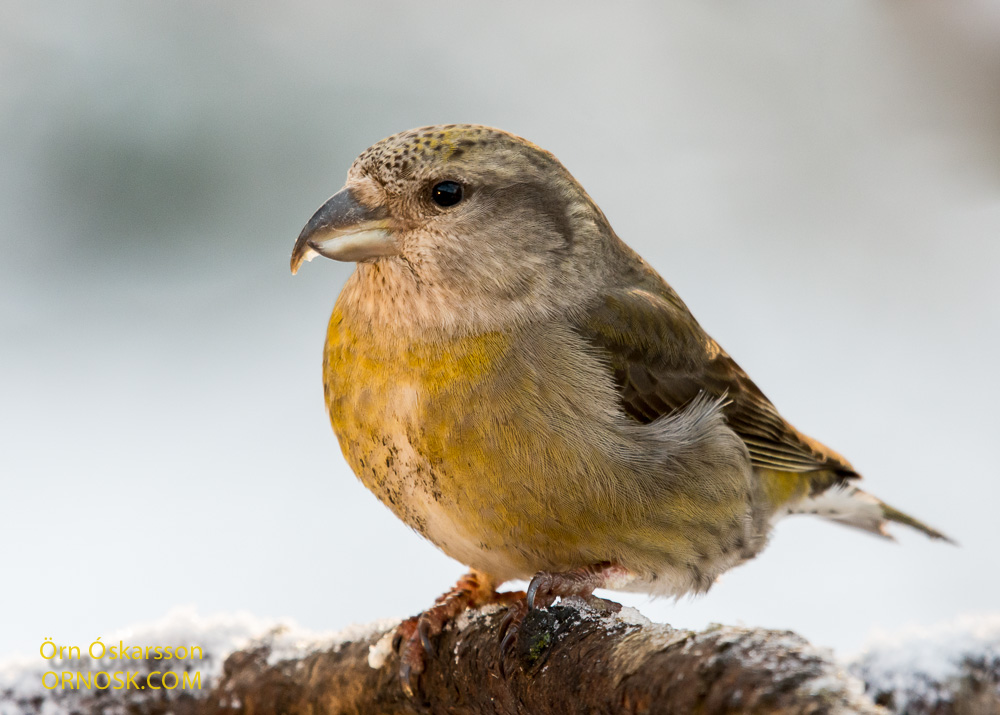
A pair of Common Crossbills came by the garden last week, just this once, as far as we know. We are hoping that these beautiful tame birds come to stay. They eat sunflower seeds from the seed feeders.
The Common Crossbills come and visit every once in a while but more often we see them fly over without coming by.

In the snow yesterday and today birds have streamed into the garden in search of food. We counted 90 Redpolls, 27 Redwings, 10 Blackbirds, 5 Fieldfares, 50 Starlings, a Snow Bunting and a Goldfinch.
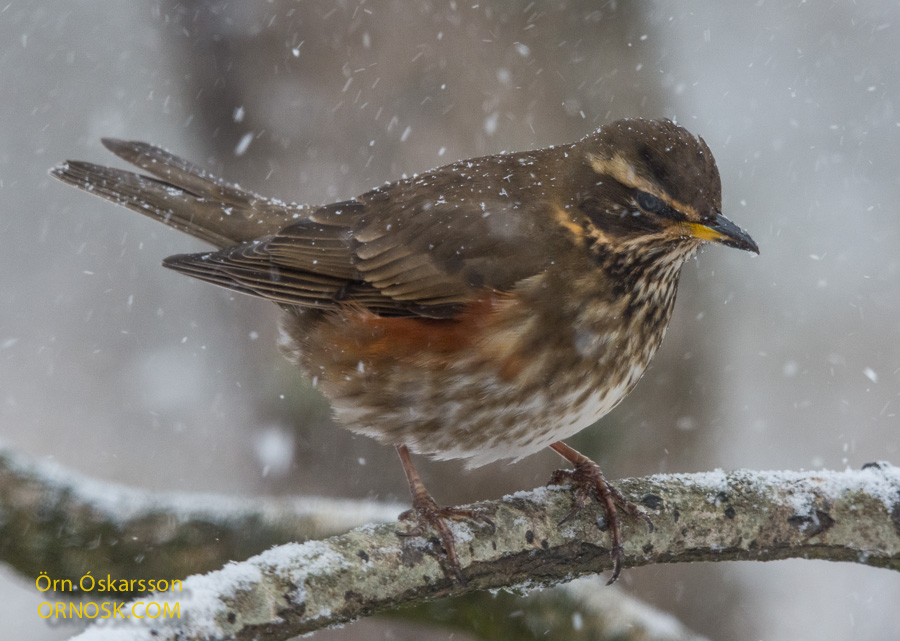
This is a bunch of hungry birds and we went out twice today to fill the feeding trays with sunflower seeds and corn, and to give them bread crumbs and apples.
